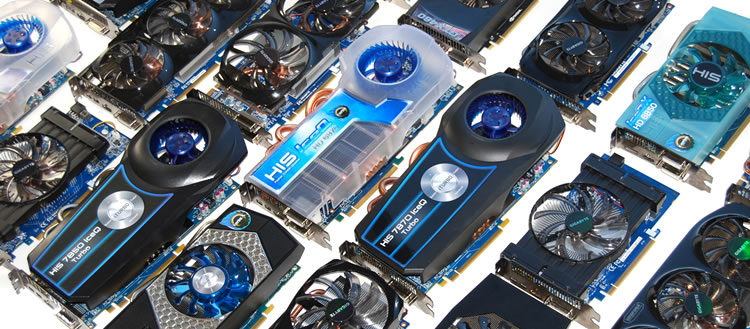Final Thoughts
Starting at the bottom of the food chain we have the sub-$150 battle that takes place primarily between the GeForce GTX 650 Ti and Radeon HD 7770. The GeForce GTX 650 Ti is the more expensive of the two retailing for around $150, while the Radeon HD 7770 costs about $130.
At 1680x1050, which is a typical resolution for gaming on these graphics cards, the GTX 650 Ti was 26% faster than the Radeon HD 7770 and 66% faster than the $100 7750. In this scenario we see the $20 extra you pay for the GTX 650 Ti are justified as the card is a good deal faster.

Moving up in price we have the GeForce GTX 660 which sells for $220. At that price it competes with the Radeon HD 7870 ($240) or 7850 ($180). The GTX 660 is 8% cheaper than the 7870 and 22% more expensive than the 7850. On the performance side, at 1920x1200 the Radeon HD 7850 was on average 12% slower than the GTX 660, while the GeForce trailed the 7870 by a 5% margin.
The Radeon HD 7850 is the best value graphics card for those looking at spending $200 of less, however it's also quite a bit slower than the Radeon HD 7870 or GeForce GTX 660.
Jumping to the $300 range, we find the GeForce GTX 660 Ti ($280) which can be compared to either the Radeon HD 7870 at $240 or the Radeon HD 7950 at $300. In this three-way shootout, the GeForce GTX 660 Ti was 9% faster than the Radeon HD 7870 at 1920x1200 and just 2% slower than the 7950. This makes the Radeon HD 7870 a better value option, while the GeForce GTX 660 Ti is the best buy if you can do without the $280.
| Price | Top Pick |
| $100 - $150 | GeForce GTX 650 Ti |
| $150 - $200 | Radeon HD 7850 |
| $200 - $250 | GeForce GTX 660 |
| $250 - $300 | GeForce GTX 660 Ti |
| $300 - $400 | Radeon HD 7950 Boost |
| $400 and up | Radeon HD 7970 |
Moving forward, it's important to point out that while there is a significant difference between the Radeon HD 7970 and 7970 GHz Edition, this does not appear to be the case with the Radeon HD 7950 and 7950 Boost graphics cards as both retail for $300.
This plays out to AMD's advantage. At 1920x1200 the GeForce GTX 670 is 12% faster than the Radeon HD 7950 and just 2% faster than the 7950 Boost. However the GTX 670 is 27% more expensive than both cards, so whichever way you slice it the Radeon HD 7950 Boost is the better proposition and things just get worse for the GTX 670 as the resolution is increased.
Now for the big guns, the GeForce GTX 680 vs. Radeon HD 7970 battle. The GeForce GTX 680 will currently set you back $470, a 18% premium over the $400 Radeon HD 7970.
Breaking down performance figures at 1920x1200, the GeForce GTX 680 was just ~1% faster than the Radeon HD 7970, while it trailed the 7970 GHz Edition by a 7% margin. This doesn't change at 2560x1600, where the GeForce GTX 680 is 2% slower than the Radeon HD 7970 and 11% slower than the 7970 GHz Edition, making the 7970 the obvious choice.
For quick reference of our best of the best GPU picks see the table on the right, broken down at each price increment with shortcut shopping links.
In a nutshell, the GeForce GTX 650 Ti is the best $100 - $150 solution, while the Radeon HD 7850 is the best $150-$200 option. Then the GeForce GTX 660 is the best $200 - $250 graphics card, making the GTX 660 Ti the best $250 - $300 option. From $300 - $400 we pick the Radeon HD 7950 Boost and when spending $400 or more the Radeon HD 7970 is our pick.
